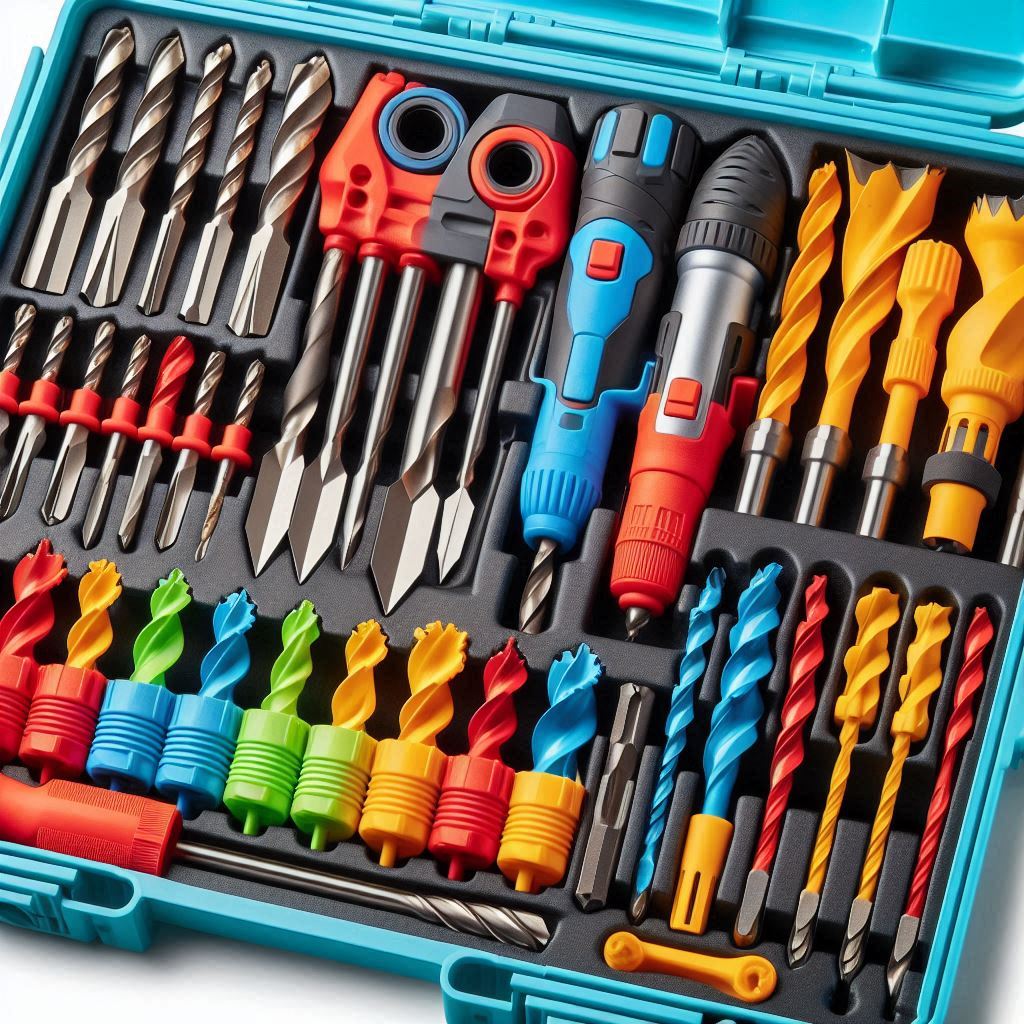This guide will walk you through the various types of drill bits suitable for drywall and how to use them effectively.
When it comes to working with drywall, having the right tools is crucial for a smooth and successful installation. One of the most important tools in your arsenal is the drill bit. Different types of drill bits are designed for various purposes, and understanding which one to use can make a significant difference in the quality of your work.
1. Standard Twist Bits

Description
Standard twist bits are the most common type of drill bits and are designed for general-purpose drilling. They have a spiral design that helps to efficiently remove debris from the hole as you drill.
Usage
For drywall, twist bits are typically used to make pilot holes for screws or to create holes for anchors. They are ideal for lighter tasks and can be used in conjunction with drywall anchors to secure items like shelves or pictures.
How to Use:
- Choose a twist bit size that matches the diameter of your screw or anchor.
- Mark the spot on the drywall where you want to drill.
- Position the drill bit at the marked spot and drill straight into the drywall.
- Ensure you drill only as deep as necessary to accommodate the anchor or screw.
2. Spade Bits

Description
Spade bits, also known as paddle bits, feature a flat, wide blade that is effective for drilling larger holes in softer materials like drywall.
Usage
Spade bits are useful when you need to make larger holes, such as for running cables or pipes through drywall. They can quickly create bigger openings, but they are not as precise as some other types of bits.
How to Use:
- Select a spade bit that matches the size of the hole you need.
- Mark the center of the hole on the drywall.
- Drill with a steady, moderate pressure to avoid tearing the drywall.
- Remove any debris from the hole and ensure it is clean.
3. Hole Saws

Description
Hole saws are cylindrical drill bits that are used to cut larger holes. They consist of a ring-shaped blade that removes a circular piece of material.
Usage
For drywall, hole saws are perfect for creating large openings needed for electrical outlets, switches, or ventilation grilles. They are particularly useful when you need a clean and precise circular cut.
How to Use:
- Choose a hole saw that matches the diameter of the hole you need.
- Secure the hole saw to the drill and position it over the marked spot.
- Start drilling slowly and steadily, applying even pressure.
- Once the hole saw has cut through the drywall, remove the cut-out piece and clean the edges if necessary.
4. Masonry Bits

Description
Masonry bits are designed for drilling into tougher materials like concrete or brick. They have a unique tip and fluting that helps them penetrate hard surfaces.
Usage
While primarily used for harder materials, masonry bits can be useful in drywall if you are working with embedded wall anchors or if you need to drill through both drywall and a tougher surface behind it.
How to Use:
- Select a masonry bit that matches the size required.
- Mark the drilling location on the drywall.
- Start drilling at a slow speed to avoid overheating the bit.
- Once you pass through the drywall, continue drilling through the harder material if needed.
5. Drywall Bits

Description
Drywall bits are specially designed for drilling into drywall and often feature a pointed tip that helps to center the bit and prevent wandering.
Usage
These bits are ideal for making precise holes for drywall anchors and screws. They are specifically engineered to handle the texture and density of drywall.
How to Use:
- Choose the appropriate size drywall bit for your task.
- Mark the spot where you need the hole.
- Drill straight into the drywall, keeping the bit aligned with your mark.
- Use the hole for inserting anchors or screws as needed.
Conclusion
Selecting the right drill bit for your drywall project can greatly affect the ease and outcome of your work. Whether you need to make small pilot holes, large openings, or precise cuts, understanding the different types of drill bits and their applications ensures you use the most appropriate tool for each task. With this guide, you’ll be better equipped to tackle your drywall projects efficiently and effectively. Happy drilling!


